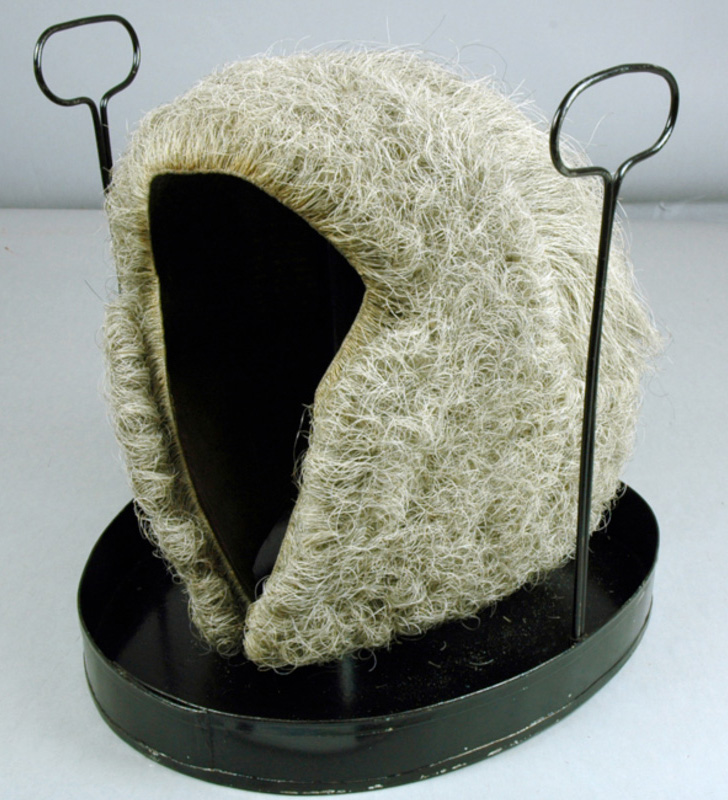Grey wig
England, early 19th century
 Donated by Miss Rigaud in 1888; 1888.28.25Queen Elizabeth I owned at least eighty wigs but the fashion really took off in Europe with the premature baldness of the French King, Louis XIII in 1624. The word comes from the word periwig, which entered the English language around 1665. The fashion came to England in 1660 after Charles II was restored to the throne after exile in France.
Donated by Miss Rigaud in 1888; 1888.28.25Queen Elizabeth I owned at least eighty wigs but the fashion really took off in Europe with the premature baldness of the French King, Louis XIII in 1624. The word comes from the word periwig, which entered the English language around 1665. The fashion came to England in 1660 after Charles II was restored to the throne after exile in France.
Headwear had been associated with the clerical and legal professions in Britain for centuries, including coifs and caps, and in accordance with fashion, the bench and bar assumed wigs in the 1680s. Though shorter wigs were favoured among the clergy, wigs for secular men and women got larger and larger, known by names indicative of their size and shape such as the 'cauliflower', 'sugar-loaf', 'cathedral', 'fork', 'spade', 'swallow-tail', 'stiletto', and 'needle'. This culminated in the huge and flamboyant concoctions of the 1770s, created over pads of greased wool and horsehair and worn for weeks (often creating welcoming habitats for bugs and mice).
A tax on wig powder in 1795 marked the beginning of the decline of wigs although they remained a symbol of certain professionals such as lawyers, coachmen, bishops and some dignitaries. This horsehair wig belonged to Martin Routh, the churchman and scholar who served as president of Magdalen College, Oxford from 1791 until his death, aged 99, in 1854. A very early daguerreotype photograph exists of Routh wearing his wig in the mid-19th century, and in his own lifetime he became one of the sights of Oxford in his wig, trencher cap and cassock, representing the customs of an earlier age.
To this day judges and senior barristers (QCs) retain the ceremonial full-bottomed wig for special occasions, and the term 'bigwig' is still applied to people of distinction or importance. In recent years there has been debate over the relevance of wigs in the modern legal system in the UK. However, the majority of barristers, judges and court officials voted to keep the wig for use in the Crown Court and at civil trials on the grounds that it adds solemnity and authority to the occasion, and grants the wearer a degree of anonymity and a professional identity separate to their own. Bench, bar and full-bottomed legal wigs are still hand-made from horsehair in grey, yellow and white, are individually fitted, and cost around £500.
